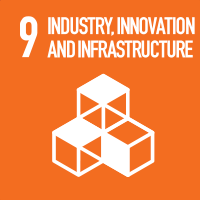Training and Research
PhD Programme Courses/classes
This page shows the PhD course's training activities for the academic year 2024/2025. Further activities will be added during the year. Please check regularly for updates!
Introduction to Blockchain
Credits: 3
Language: English
Teacher: Nicola Fausto Spoto
Principles and Applications of Abstract Interpretation
Credits: 3
Language: English
Teacher: Michele Pasqua
AI and explainable models
Credits: 5
Language: English
Teacher: Lorenza Brusini
Automated Software Testing
Credits: 4
Language: English
Teacher: Mariano Ceccato
Multi Omics Patient Stratification
Credits: 3
Language: English
Teacher: Rosalba Giugno
ACADEMIC WRITING IN LATEX
Credits: 3
Language: English
Teacher: Enrico Gregorio
A practical interdisciplinary PhD course on exploratory data analysis
Credits: 4
Language: English
Teacher: Rui Pedro Fernandes Ribeiro
Cyber-physical systems security
Credits: 3
Language: English
Teacher: Massimo Merro
Elements of Machine Learning
Credits: 3
Language: English
Teacher: Ferdinando Cicalese
Genomica informazionale: contenuto informativo dei genomi e s divergenza dalla randomicità
Credits: 3
Language: English
Introduction to Quantum Machine Learning
Credits: 3
Language: English
Teacher: Alessandra Di Pierro
Laboratory of quantum information in classical wave-optics analogy
Credits: 3
Language: English
Teacher: Claudia Daffara
Elements of Machine Learning (2024/2025)
Teacher
Referent
Credits
3
Language
English
Class attendance
Free Choice
Location
VERONA
Learning objectives
Machine Teaching studies how efficiently a teacher can guide a learner to acquire a target hypothesis.
The classic works date back to the 1990’s [Shinohara91,Goldman95] consider the setting where the teacher sends in one shot a set of labeled examples to the learner, who then has to output the correct target hypothesis. In the more recent studies, the focus has been on the interactive setting, where the Teacher and Leaner interact over multiple rounds. In each round, the teacher sends examples to the learner, who returns some feedback; this process continues until the learner reaches the target hypothesis (or a good approximation of it). Machine teaching models have proved useful in several contexts, e.g., crowd sourcing, intelligent tutoring systems, analysis of training set attacks. Moreover, commercial tools are under development by the Microsoft Machine Teaching Group, as detailed on their web page, which are based on, or employ, the paradigm of machine teaching, e.g., PICL, which leverages the selection of examples that maximize the training value of the interaction with the teacher; LUIS for natural language understanding; and other projects on building models for autonomous systems, and tools enabling non-experts of machine learning to build their models.
Prerequisites and basic notions
Basic knowledge of algorithm analysis and discrete probability
Program
Foundations: From PAC learning to Active learning, to Machine Teaching; Teaching dimension concepts (batch, sequential, recursive, VC-dimension and sample compression); Interactive Machine Teaching and Black Box machine teaching; Application: human/robot/computer interaction, training-set attacks, crowdsourcing.
Bibliography
Didactic methods
Lectures (blackboard and slides)
Learning assessment procedures
Reading assignments and oral discussion
Assessment
Understanding of the basic concepts and ability to apply them in new contexts
Criteria for the composition of the final grade
The result will be Pass/Fail

